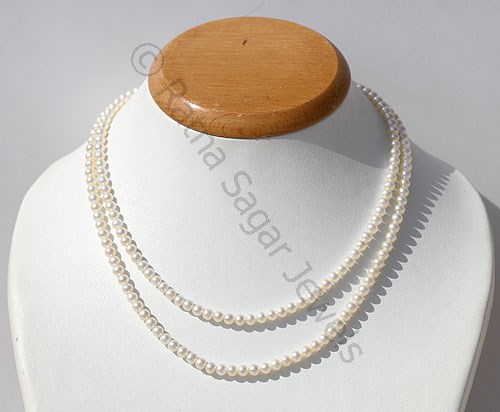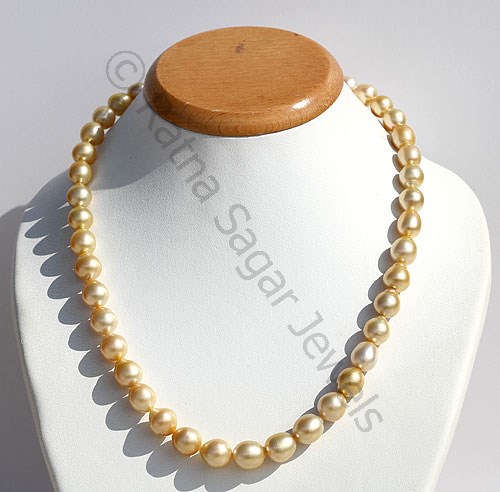Let us take a look at factors that affect pricing and shelf life of the lovely gemstone Pearl.
1. Nacre composition and thickness:
Nacre is the ‘mother of the pearl’ and forms the outer shell of the pearl. Harder and thicker the nacre, longer is the shelf life of a pearl. The quality of nacre also gives the pearl its signature iridescence. Nacre is a mysterious composition of biological elements, polymers and adhesive. It is made of aragonite, calcium carbonate, and elastic biological polymers (like chitin). Glued in tight structure by proteins and enzymes, the nacre can withstand a stress force of up to 100 GPa in dry state, making it just as strong as the silicon ball!
Nacre composition is very hard to replicate in lab conditions, and that is why the manufacturers still rely on the organic source to produce it. Pearls with a nacre thickness ranging between 0.4 mm and 0.8 mm are considered as invincible in one man’s lifetime. Thicker the nacre, higher will be the price. Not just in terms of strength, pearls with thick nacre radiate an exuberant play of colour when exposed to white light.

2. Colour and lustre:
With the rise and turn of technology, pearl industry have come up with magnificent colours. White, pastel and pink remain the top contenders in the market, followed by copper and brown.
Here is a list of colours available in pearl industry now in 2016.
- Creamrose
- Rosaline
- Bordeaux
- Coral
- Bright gold
- Black
- Platinum
- Charcoal grey
- Brass
- Almond
- Maroon/ Purple
- Blue
- Peach
Tahitian pearl oysters bear the most radiant products. If you are looking for pure pearls, opt for lighter shades, as there is a least possibility of them being cured, polished, buffed and dyed with artificial ingredients.
For whatsoever reason other than quality and purity, white and cream coloured pearls command an unconquerable position in the category of coloured gemstones from organic category.

3. Treatments done on pearls:
All pearls undergo some level of polishing to an extent. Greater the degree of dyeing, lesser will be the price. Irradiation of pearls and subsequent pinking of pearl gives them an enhanced sheen. Watch out for hoax pearls that have poor sheen and spotting, with irregular lustre.
As per international pearl industry guidelines, all pearls have to necessarily carry the details of processing undergone to warn buyers against potential risk of losing the pearl value and life after certain time.
4. Shapes that sell:
The different pearl shapes available in the market without any sort of processing are:
- Round
- Button
- Oval and Baroques
- Sticks and tear-shaped A perfectly round pearl is the rarest thing to obtain. Only 1% of the cultured pearls bear a round shape gem. Baroque and button shaped pearls are common and have a significantly high fan following in the European fashion market. Near-round and oval pearls are sourced to Chinese and Indian markets where they generate respectable revenue.
Do this 4-step magnification and you would never be duped in a pearl market ever.
03241b60-629d-4bc8-9612-b9a9e9307884|0|.0|27604f05-86ad-47ef-9e05-950bb762570c
Tags
: Wholesale Gemstone Beads . Gemstone Beads . Pearl Gemstones . Pearl Gemstone Beads